 W
WOn 27 May 1942, Reinhard Heydrich – the commander of the Reich Security Main Office (RSHA), acting governor of the Protectorate of Bohemia and Moravia, and a principal architect of the Holocaust – was attacked and wounded in an assassination attempt in Prague by Czechoslovak resistance operatives Jozef Gabčík and Jan Kubiš. He died of the injuries sustained on 4 June 1942. Heydrich was one of the most powerful men in Nazi Germany and an important figure in the rise of Adolf Hitler.
 W
WOperation Barbarossa also known as the German invasion of the Soviet Union was the code name for the invasion of the Soviet Union by Nazi Germany and some of its Axis allies, which started on Sunday, 22 June 1941, during World War II. The operation put into action Nazi Germany's ideological goal of conquering the western Soviet Union so as to repopulate it with Germans. The German Generalplan Ost aimed to use some of the conquered people as slave labour for the Axis war effort while acquiring the oil reserves of the Caucasus as well as the agricultural resources of various Soviet territories. Their ultimate goal included the eventual extermination, enslavement, Germanization and mass deportation to Siberia of the Slavic peoples, and to create more Lebensraum for Germany.
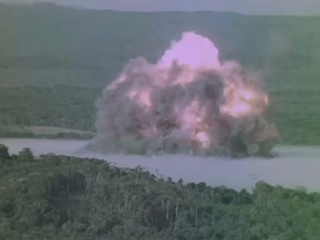 W
WOperation Blowdown was an explosives test carried out in the Iron Range jungle of Australia's Cape York Peninsula in 1963, to simulate the effects of a nuclear weapon on tropical rainforest. It was conducted by the Australian Army, the Department of Supply, and the Defence Standards Laboratory with participation from the United Kingdom, Canada and United States. In addition, blast effects on military material, field fortifications, supply points, and foot and vehicle movement were examined in a rain forest environment.
 W
WThe de Havilland Propellers Blue Streak was a British Intermediate-range ballistic missile (IRBM), and later the first stage of the Europa satellite launch vehicle. Blue Streak was cancelled without entering full production.
 W
WThe AMES Type 85, also known by its rainbow code Blue Yeoman, was an extremely powerful early warning (EW) and fighter direction (GCI) radar used by the Royal Air Force (RAF) as part of the Linesman/Mediator radar network. First proposed in early 1958, it was eleven years before they became operational in late 1968, by which time they were already considered obsolete. The Type 85 remained the RAF's primary air defense radar until it was replaced by Marconi Martello sets in the late-1980s as part of the new IUKADGE network.
 W
WOperation Bumblebee was a US Navy effort to develop surface to air missiles (SAMs) to provide a mid-range layer of anti-aircraft defence, between anti-aircraft guns in the short range and fighter aircraft operating at long range. A major reason for the Bumblebee efforts was the need to attack bombers before they could launch standoff anti-shipping weapons, as these aircraft might never enter the range of the shipboard guns.
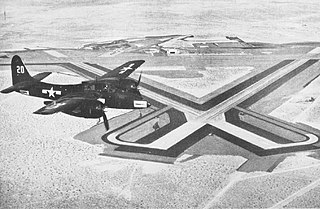 W
WProject Camel encompassed the work performed by the California Institute of Technology (Caltech) in support of the Manhattan Project during World War II. These activities included the development of detonators and other equipment, testing of bomb shapes dropped from Boeing B-29 Superfortress bombers, and the Salt Wells Pilot Plant, where explosive components of nuclear weapons were manufactured.
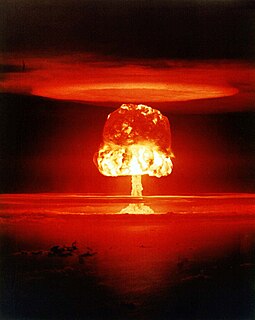 W
WOperation Castle was a United States series of high-yield (high-energy) nuclear tests by Joint Task Force 7 (JTF-7) at Bikini Atoll beginning in March 1954. It followed Operation Upshot–Knothole and preceded Operation Teapot.
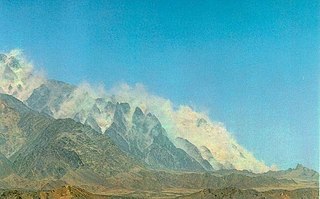 W
WChagai-I is the code name of five simultaneous underground nuclear tests conducted by Pakistan at 15:15 hrs PST on 28 May 1998. The tests were performed at Ras Koh Hills in the Chagai District of Balochistan Province.
 W
WOperation CHASE was a United States Department of Defense program for the disposal of unwanted munitions at sea from May 1964 until the early 1970s. Munitions were loaded onto ships to be scuttled once they were at least 250 miles offshore. While most of the sinkings involved conventional weapons, four of them involved chemical weapons. The disposal site for the chemical weapons was a three-mile (5 km) area of the Atlantic Ocean between the coast of the U.S. state of Florida and the Bahamas. The CHASE program was preceded by the United States Army disposal of 8000 short tonsof mustard and lewisite chemical warfare gas aboard the scuttled SS William C. Ralston in April 1958. These ships were sunk by having Explosive Ordnance Disposal (EOD) teams open seacocks on the ship after they arrived at the disposal site. The typical Liberty ship sank about three hours after the seacocks were opened.
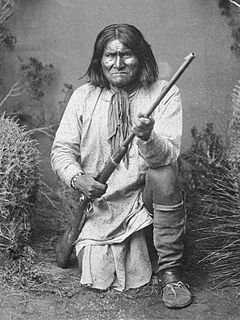 W
WThe code name Geronimo controversy came about after media reports that the U.S. operation to kill Osama bin Laden used the code name "Geronimo" to refer to either the overall operation, to fugitive bin Laden himself or to the act of killing or capturing bin Laden.
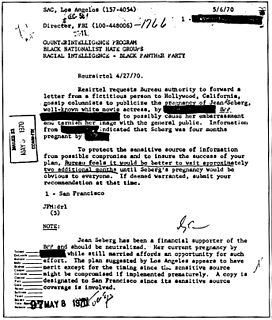 W
WCOINTELPRO (1956–1971) was a series of covert and illegal projects conducted by the United States Federal Bureau of Investigation (FBI) aimed at surveilling, infiltrating, discrediting, and disrupting domestic American political organizations. FBI records show COINTELPRO resources targeted groups and individuals the FBI deemed subversive, including feminist organizations, the Communist Party USA, anti–Vietnam War organizers, activists of the civil rights movement and Black Power movement, environmentalist and animal rights organizations, the American Indian Movement (AIM), independence movements, a variety of organizations that were part of the broader New Left, and unrelated groups such as the Ku Klux Klan.
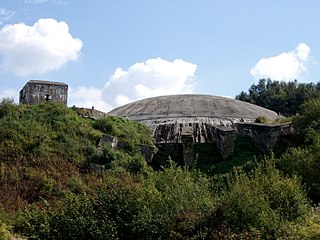 W
WCrossbow was the code name in World War II for Anglo-American operations against the German long range reprisal weapons (V-weapons) programme. The main V-weapons were the V-1 flying bomb and V-2 rocket – these were launched against Britain from 1944 to 1945 and used against continental European targets as well.
 W
WOperation Crossroads was a pair of nuclear weapon tests conducted by the United States at Bikini Atoll in mid-1946. They were the first nuclear weapon tests since Trinity in July 1945, and the first detonations of nuclear devices since the atomic bombing of Nagasaki on August 9, 1945. The purpose of the tests was to investigate the effect of nuclear weapons on warships.
 W
WOpération Daguet was the codename for French operations during the 1991 Gulf War. The conflict was between Iraq and a coalition force of approximately 30 nations led by the United States and mandated by the United Nations in order to liberate Kuwait.
 W
WThe Gulf War was a war waged by coalition forces from 35 nations led by the United States against Iraq in response to Iraq's invasion and annexation of Kuwait arising from oil pricing and production disputes.
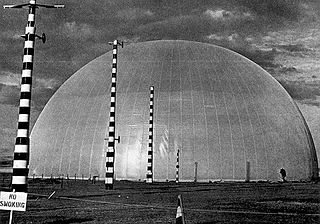 W
WOperation Distant Plain was a series of non-nuclear explosive and detonable gas tests performed on test sites in Alberta, Canada, during the course of 1966 and 1967. Their purpose was to provide airblast, cratering, and ground shock data in summer and winter conditions for testing new prototype equipment, military targets and coniferous forest blowdown, and defoliation.
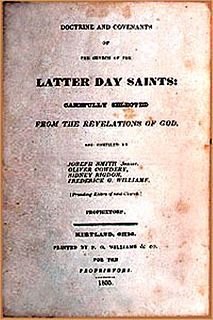 W
WThe original 1835 edition of the Doctrine and Covenants, a book of LDS scripture, used code names for certain people and places. These names appear only in seven of the book's sections, mainly those dealing with the United Order. It is believed that their purpose was to avoid the use of these sections in lawsuits by opponents of the Church, since giving the real names might have provided evidence that the United Order was legally a company, with its members financially liable for each other and the whole Order.
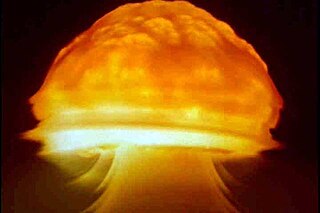 W
WOperation Dominic was a series of 31 nuclear test explosions with a 38.1 Mt (159 PJ) total yield conducted in 1962 by the United States in the Pacific. This test series was scheduled quickly, in order to respond in kind to the Soviet resumption of testing after the tacit 1958–1961 test moratorium. Most of these shots were conducted with free-fall bombs dropped from B-52 bomber aircraft. Twenty of these shots were to test new weapons designs; six to test weapons effects; and several shots to confirm the reliability of existing weapons. The Thor missile was also used to lift warheads into near-space to conduct high-altitude nuclear explosion tests; these shots were collectively called Operation Fishbowl.
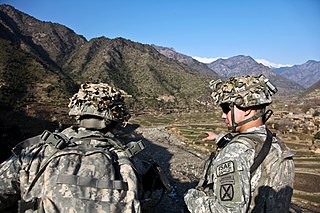 W
WOperation Enduring Freedom (OEF) was the official name used by the U.S. government for the Global War on Terrorism. On 7 October 2001, in response to the September 11 attacks, President George W. Bush announced that airstrikes targeting Al-Qaeda and the Taliban had begun in Afghanistan. Operation Enduring Freedom primarily refers to the War in Afghanistan, but it was also affiliated with counterterrorism operations in other countries, such as OEF-Philippines and OEF-Trans Sahara.
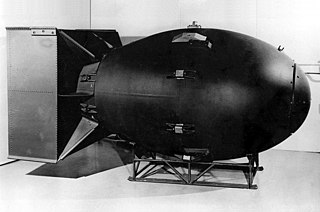 W
W"Fat Man" is the codename for the type of nuclear bomb that was detonated over the Japanese city of Nagasaki by the United States on 9 August 1945. It was the second of the only two nuclear weapons ever used in warfare, the first being Little Boy, and its detonation marked the third nuclear explosion in history. It was built by scientists and engineers at Los Alamos Laboratory using plutonium from the Hanford Site, and it was dropped from the Boeing B-29 Superfortress Bockscar piloted by Major Charles Sweeney.
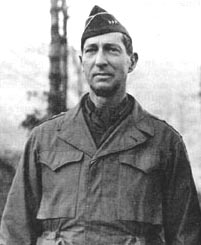 W
WOperation Flagpole was part of the run-up to Operation Torch, the planned Allied invasion of North Africa during World War II. It involved arranging for and carrying out a top-secret high-level meeting between U.S. General Mark W. Clark, representing the Allies, and Général Charles E. Mast, the leader of a group of pro-Allied Vichy France officers in French North Africa, to secure their cooperation with the invasion.
 W
WOperation Flax was a Western Allied air operation executed during the Tunisian campaign, as part of the larger North African campaign of the Second World War. The operation was designed to cut the air supply lines between Italy and the Axis armies in Tunis, Tunisia, in April 1943. The parallel Allied naval effort was Operation Retribution.
 W
WHigh Explosive Research (HER) was the British project to develop atomic bombs independently after the Second World War. This decision was taken by a cabinet sub-committee on 8 January 1947, in response to apprehension of an American return to isolationism, fears that Britain might lose its great power status, and the actions by the United States to withdraw unilaterally from sharing of nuclear technology under the 1943 Quebec Agreement. The decision was publicly announced in the House of Commons on 12 May 1948.
 W
WOperation Houndsworth was the codename for a British Special Air Service operation during the Second World War. The operation carried out by 'A' Squadron, 1st Special Air Service between 6 June and 6 September 1944, was centred on Dijon in the Burgundy region of France. Their objective was to disrupt German lines of communication, coordinate the activities of the French Resistance and prevent German reinforcements moving to the Normandy beachheads, especially the 2nd SS Panzer Division Das Reich.
 W
WOperation I-Go was an aerial counter-offensive launched by Imperial Japanese forces against Allied forces during the Solomon Islands and New Guinea Campaigns in the Pacific Theater of World War II. Taking place from 1–16 April 1943, during the operation, Japanese aircraft – primarily from Imperial Japanese Navy units under the command of Admirals Isoroku Yamamoto and Jinichi Kusaka – attacked Allied ships, aircraft, and land installations in the southeast Solomon Islands and New Guinea. The goal of the operation was to halt the Allied offensives in New Guinea and the Solomons and to give Japan time to prepare a new set of defenses in response to recent defeats to the Allies in the Battle of Guadalcanal and in New Guinea at Buna–Gona, Wau, and the Bismarck Sea.
 W
WThe Battle of Okinawa , codenamed Operation Iceberg, was a major battle of the Pacific War fought on the island of Okinawa by United States Army and United States Marine Corps (USMC) forces against the Imperial Japanese Army. The initial invasion of Okinawa on 1 April 1945, was the largest amphibious assault in the Pacific Theater of World War II. The Kerama Islands surrounding Okinawa were preemptively captured on 26 March, (L-6) by the 77th Infantry Division. The 98-day battle lasted from 26 March until 2 July 1945. After a long campaign of island hopping, the Allies were planning to use Kadena Air Base on the large island of Okinawa as a base for Operation Downfall, the planned invasion of the Japanese home islands, 340 mi (550 km) away.
 W
WOperation Jubilee or the Dieppe Raid was an Allied amphibious attack on the German-occupied port of Dieppe in northern France, during the Second World War. Over 6,050 infantry, predominantly Canadian, supported by a regiment of tanks, were put ashore from a naval force operating under protection of Royal Air Force (RAF) fighters.
 W
WThe United States Invasion of Panama, codenamed Operation Just Cause, lasted over a month between mid-December 1989 and late January 1990. It occurred during the administration of President George H. W. Bush and ten years after the Torrijos–Carter Treaties were ratified to transfer control of the Panama Canal from the U.S. to Panama by January 1, 2000. The primary purpose of the invasion was to depose the de facto Panamanian leader, general and dictator Manuel Noriega. Noriega, who for a long time worked with the Central Intelligence Agency (CIA), was wanted by the United States for racketeering and drug trafficking. Following the operation, the Panama Defense Forces were dissolved and President-elect Guillermo Endara was sworn into office. The United Nations General Assembly and the Organization of American States condemned the invasion as a violation of international law.
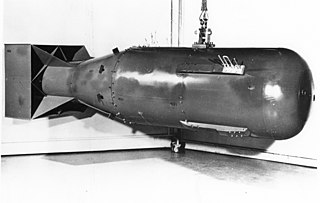 W
W"Little Boy" was the codename for the type of atomic bomb dropped on the Japanese city of Hiroshima on 6 August 1945 during World War II. It was the first nuclear weapon used in warfare. The bomb was dropped by the Boeing B-29 Superfortress Enola Gay piloted by Colonel Paul W. Tibbets, Jr., commander of the 509th Composite Group of the United States Army Air Forces and Captain Robert A. Lewis. It exploded with an energy of approximately 15 kilotons of TNT (63 TJ) and caused widespread death and destruction throughout the city. The Hiroshima bombing was the second man-made nuclear explosion in history, after the Trinity nuclear test.
 W
WOperation Market Garden was an unsuccessful allied military operation of the Second World War. Fought in the Netherlands from 17 to 25 September 1944. The operation was the brainchild of Field Marshal Bernard Montgomery and strongly supported by British Prime Minister Winston Churchill. The airborne operation was undertaken by the First Allied Airborne Army with the land operation by XXX Corps of the British Second Army. The objective was to create a 64 mi (103 km) salient into German territory with a bridgehead over the River Rhine, creating an Allied invasion route into northern Germany. This was to be achieved by seizing a series of nine bridges with combined US and British airborne forces, with land forces swiftly following over the bridges. The operation succeeded in liberating the Dutch cities of Eindhoven and Nijmegen along with many towns, creating a 60 mi (97 km) salient into German-held territory, limiting V-2 rocket launching sites. It failed, however, to secure a bridgehead over the Rhine, with the advance being halted at the river.
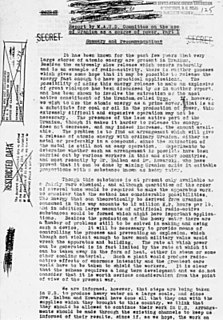 W
WThe MAUD Committee was a British scientific working group formed during the Second World War. It was established to perform the research required to determine if an atomic bomb was feasible. The name MAUD came from a strange line in a telegram from Danish physicist Niels Bohr referring to his housekeeper, Maud Ray.
 W
WProject MKUltra is the code name given to a program of experiments on human subjects that were designed and undertaken by the U.S. Central Intelligence Agency (CIA), some of which were illegal. Experiments on humans were intended to develop procedures and identify drugs such as LSD to be used in interrogations in order to weaken the individual and force confessions through brainwashing and psychological torture. The project was organized through the Office of Scientific Intelligence of the CIA and coordinated with the United States Army Biological Warfare Laboratories. Other code names for drug-related experiments were Project Bluebird and Project Artichoke.
 W
WThe Northrop Tacit Blue was a technology demonstrator aircraft created to demonstrate that a low-observable stealth surveillance aircraft with a low-probability-of-intercept radar (LPIR) and other sensors could operate close to the forward line of battle with a high degree of survivability.
 W
WThe Official Residence of the President of the Republic of China is provided by the Government of the Republic of China (ROC) in Taiwan for the President, while in office, along with his or her family. The current official residence is at the intersection of Chongqing South Road Section 2 and Aiguo West Road, Zhongzheng, Taipei, and has been in use since Lee Teng-hui's presidency. Security of the residence is maintained by the Sixth Special Corps of the National Police Agency along with a wall along the perimeter of the complex.
 W
WOperation Smiling Buddha was the assigned code name of India's first successful nuclear bomb test on 18 May 1974. The bomb was detonated on the army base Pokhran Test Range (PTR), in Rajasthan, by the Indian Army under the supervision of several key Indian generals.
 W
WOrange Harvest was an ESM receiver fitted to marine patrol Avro Shackletons during the Cold War.
 W
WThe AMES Type 82, also widely known by its rainbow codename Orange Yeoman, was an S-band 3D radar built by Marconi and used by the Royal Air Force (RAF), initially for tactical control and later for air traffic control (ATC).
 W
WThe Pokhran-II tests were a series of five nuclear bomb test explosions conducted by India at the Indian Army's Pokhran Test Range in May 1998. It was the second instance of nuclear testing conducted by India; the first test, code-named Smiling Buddha, was conducted in May 1974.
 W
WOperation Prairie Flat was a test involving the detonation of a 500-short-ton (450 t) spherical surface charge of TNT to evaluate airblast, ground shock and thermal effects of nuclear weapons.
 W
WProject National Glory or Project Guoguang was a military attempt by the Republic of China (ROC) Armed Forces in Taiwan to try to recapture Mainland China held by the People's Liberation Army in the newly established People's Republic of China (PRC). Preparatory operations began in 1961 and the project was abandoned in July 1972.
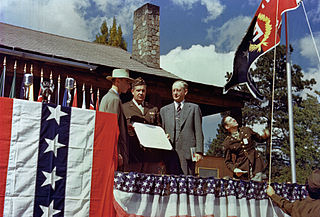 W
WThe Los Alamos Laboratory, also known as Project Y, was a secret laboratory established by the Manhattan Project and operated by the University of California during World War II. Its mission was to design and build the first atomic bombs. Robert Oppenheimer was its first director, serving from 1943 to December 1945, when he was succeeded by Norris Bradbury. In order to enable scientists to freely discuss their work while preserving security, the laboratory was located in a remote part of New Mexico. The wartime laboratory occupied buildings that had once been part of the Los Alamos Ranch School.
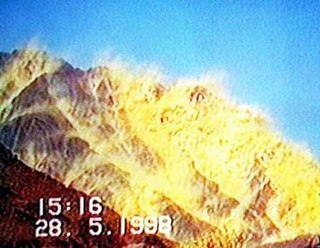 W
WProject-706, also known as Project-726 was a codename of a project to develop Pakistan's first atomic bomb using uranium. At the same time, Pakistani nuclear technology scientists and engineers gained expertise in the use of reactor-grade plutonium and successfully produced weapons grade plutonium by the early 1980s.
 W
WThe Battle of the Mareth Line or the Battle of Mareth was an attack in the Second World War by the British Eighth Army in Tunisia, against the Mareth Line held by the Italo-German 1st Army. It was the first big operation by the Eighth Army since the Second Battle of El Alamein 4+1⁄2 months previously. On 19 March 1943, Operation Pugilist, the first British attack, established a bridgehead but a break-out attempt was defeated by Axis counter-attacks. Pugilist established an alternative route of attack and Operation Supercharge II, an outflanking manoeuvre via the Tebaga Gap was planned. Montgomery reinforced the flanking attack, which from 26 to 31 March, forced the 1st Army to retreat to Wadi Akarit, another 40 mi (64 km) back in Tunisia.
 W
WRagtime or RAGTIME is the code name of four secret surveillance programs conducted by the National Security Agency (NSA) of the United States. These programs date back to at least 2002 and were revealed in March 2013 in the book Deep State: Inside the Government Secrecy Industry, by Marc Ambinder and D.B. Grady.
 W
WOperation Reinhard or Operation Reinhardt was the codename of the secretive German plan in World War II to exterminate Polish Jews in the General Government district of German-occupied Poland. This deadliest phase of the Holocaust was marked by the introduction of extermination camps.
 W
WOperation Retribution was the Second World War air and naval blockade designed to prevent the seaborne evacuation of Axis forces from Tunisia to Sicily. Axis forces were isolated in northern Tunisia and faced a final Allied assault. The equivalent blockade of air evacuation was Operation Flax.
 W
WOperation Sailor Hat was a series of explosives effects tests, conducted by the United States Navy Bureau of Ships under the sponsorship of the Defense Atomic Support Agency. The tests consisted of two underwater explosions at San Clemente Island, California in 1964 and three surface explosions at Kahoʻolawe, Hawaii in 1965. They were non-nuclear tests employing large quantities of conventional explosives to determine the effects of a nuclear weapon blast on naval vessels, and the first major test of this kind since Operation Crossroads in July 1946.
 W
WThe United States Secret Service uses code names for U.S. presidents, first ladies, and other prominent persons and locations. The use of such names was originally for security purposes and dates to a time when sensitive electronic communications were not routinely encrypted; today, the names simply serve for purposes of brevity, clarity, and tradition. The Secret Service does not choose these names, however. The White House Communications Agency maintains a list that candidates choose from, often choosing ones that resonate with them personally.
 W
WOperation Snowball was a conventional explosive test to obtain information on nuclear weapon detonations run by the Defence Research Board with participation from the United Kingdom and United States. A detonation of 500 short tons (454 t) of TNT was used to study the resulting phenomena. The test was held at the Suffield Experimental Station in Alberta and was the largest ever man-made, non-accidental explosion in Canada. The test was also the first of its kind using a stacked TNT block hemisphere of such magnitude, a method repeated in six subsequent tests such as Operation Sailor Hat and Prairie Flat. The test allowed verifying predicted properties of shock and blast and determining its effect on a variety of military targets at varied distances from ground zero.
 W
WSonderaktion 1005, also called Aktion 1005, or Enterdungsaktion, began in May 1942 during World War II to hide any evidence that people had been murdered by Nazi Germany in German-occupied Poland and Soviet Union. The project, which was conducted in secrecy from 1942 to 1944, focused on concealing evidence of mass murder at the Operation Reinhard killing centres, as well as at other sites. Groups of Sonderkommando prisoners, officially called Leichenkommandos, were used to exhume mass graves and burn the bodies; inmates were often put in chains to prevent them from escaping.
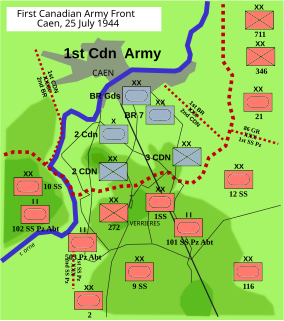 W
WOperation Spring was an offensive operation of the Second World War conducted by II Canadian Corps during the Normandy campaign in 1944. The plan was intended to create pressure on the German forces operating on the British and Canadian front simultaneous with Operation Cobra, an American offensive. Operation Spring was intended to capture Verrières Ridge and the villages on the south slope of the ridge. The German defence of the ridge contained the offensive on the first day and inflicted many casualties on the Canadians.
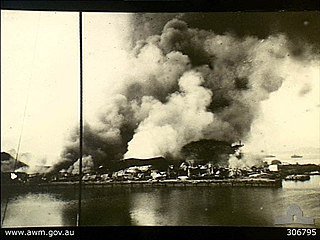 W
WThe Invasion of Sumatra was the assault by Imperial Japanese forces on the Dutch East Indies that took place from 14 February to 28 March 1942. The invasion was part of the Pacific War in South-East Asia during World War II and led to the capture of the island. The invasion of Sumatra was planned to occur prior to the invasion of Java to destroy the west flank of the allies and to give access to Java.
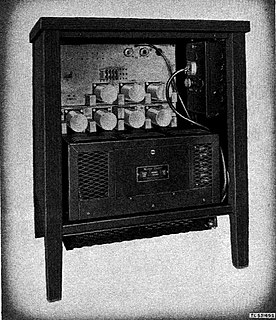 W
WTEMPEST is a U.S. National Security Agency specification and a NATO certification referring to spying on information systems through leaking emanations, including unintentional radio or electrical signals, sounds, and vibrations. TEMPEST covers both methods to spy upon others and how to shield equipment against such spying. The protection efforts are also known as emission security (EMSEC), which is a subset of communications security (COMSEC).
 W
W"Thin Man" was the code name for a proposed plutonium gun-type nuclear bomb that the United States was developing during the Manhattan Project. Its development was abandoned when it was discovered that the spontaneous fission rate of nuclear reactor-bred plutonium was too high for use in a gun-type design due to the high concentration of the isotope plutonium-240.
 W
WTrinity was the code name of the first detonation of a nuclear device. It was conducted by the United States Army at 5:29 a.m. on July 16, 1945, as part of the Manhattan Project. The test was conducted in the Jornada del Muerto desert about 35 miles (56 km) southeast of Socorro, New Mexico, on what was then the USAAF Alamogordo Bombing and Gunnery Range, now part of White Sands Missile Range. The only structures originally in the vicinity were the McDonald Ranch House and its ancillary buildings, which scientists used as a laboratory for testing bomb components. A base camp was constructed, and there were 425 people present on the weekend of the test.
 W
WTube Alloys was the research and development programme authorised by the United Kingdom, with participation from Canada, to develop nuclear weapons during the Second World War. Starting before the Manhattan Project in the United States, the British efforts were kept classified, and as such had to be referred to by code even within the highest circles of government.
 W
WIn 1944 the Third Reich began work on the construction of a partially underground bunker factory codenamed Weingut I in the forest known as the Mühldorfer Hart, slightly to the west of Mühldorf am Inn in Upper Bavaria. Plans for the bunker called for a massive reinforced concrete barrel vault composed of 12 arch sections under which Messerschmitt Me 262 jet engines would be manufactured in a nine-storey factory.
 W
WOperation Weserübung was Germany's assault on Denmark and Norway during the Second World War and the opening operation of the Norwegian Campaign.